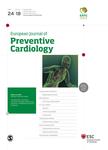版权所有:内蒙古大学图书馆 技术提供:维普资讯• 智图
内蒙古自治区呼和浩特市赛罕区大学西街235号 邮编: 010021

作者机构:Intelligent Data Mining Laboratory Department of Medical Research Taichung Veterans General Hospital 1650 Taiwan Boulevard Sect. 4 Taichung 407219 Taiwan. Division of Endocrinology and Metabolism Taichung Veterans General Hospital 1650 Taiwan Boulevard Sect. 4 Taichung 407219 Taiwan. School of Medicine National Yang Ming Chiao Tung University No. 155 Sec. 2 Linong St. Beitou Dist. Taipei 112304 Taiwan. Department of Post-Baccalaureate Medicine College of Medicine National Chung Hsing University 145 Xingda St. South Dist. Taichung 402202 Taiwan. Yamada Diabetes Clinic Kamata 5-24-4 Ota-ku Tokyo 144-0052 Japan. Division of Endocrinology and Metabolism Jichi Medical University Saitama Medical Center Amanuma-cho 1-847 Omiya-ku Saitama 330-8503 Japan. Department of Diabetes and Metabolic Diseases Graduate School of Medicine The University of Tokyo 7-3-1 Hongo Bunkyo-ku Tokyo 113-8655 Japan. Division for Health Service Promotion The University of Tokyo 7-3-1 Hongo Bunkyo-ku Tokyo 113-0033 Japan. The University of Tokyo Excellent Young Researcher Program The University of Tokyo 7-3-1 Hongo Bunkyo-ku Tokyo 113-8654 Japan.
出 版 物:《European journal of preventive cardiology》
年 卷 期:2024年第31卷第10期
页 面:1277-1285页
学科分类:1002[医学-临床医学] 100201[医学-内科学(含:心血管病、血液病、呼吸系病、消化系病、内分泌与代谢病、肾病、风湿病、传染病)] 10[医学]
主 题:Cardiovascular complications Gene–environment interaction Physical activity Polygenic risk score Type 2 diabetes
摘 要:AIMS:The beneficial effects of exercise on reducing the risk of cardiovascular disease are established. However, the potential interaction between genetic risk for type 2 diabetes and physical activity on cardiovascular outcomes remains elusive. We aimed to investigate the effect of type 2 diabetes genetic risk-physical activity interaction on cardiovascular outcomes in individuals with diabetes. METHODS AND RESULTS:Using the UK Biobank cohort, we investigated the effect of type 2 diabetes genetic risk-physical activity interaction on three-point and four-point major adverse cardiovascular events (MACE), in 25 701 diabetic participants. We used a polygenic risk score for type 2 diabetes (PRS_T2D) as a measure of genetic risk for type 2 diabetes. We observed a significant interaction between PRS_T2D and physical activity on cardiovascular outcomes (three-point MACE: P trend for interaction = 0.0081; four-point MACE: P trend for interaction = 0.0037). Among participants whose PRS_T2D was in the first or second quartile, but not in the third or fourth quartile, each 10 metabolic equivalents (METs) hours per week of physical activity decreased the risk of three-point or four-point MACE. Furthermore, restricted cubic spline analysis indicated that intense physical activity (80 METs hours per week, which was self-reported by 12.7% of participants) increased the risk of cardiovascular outcomes among participants whose PRS_T2D was in the fourth quartile. Sub-group analysis suggested that negative impact of intense physical activity was observed only in non-insulin users. CONCLUSION:The beneficial effect of physical activity on cardiovascular outcomes disappeared among those with high genetic risk for type 2 diabetes.